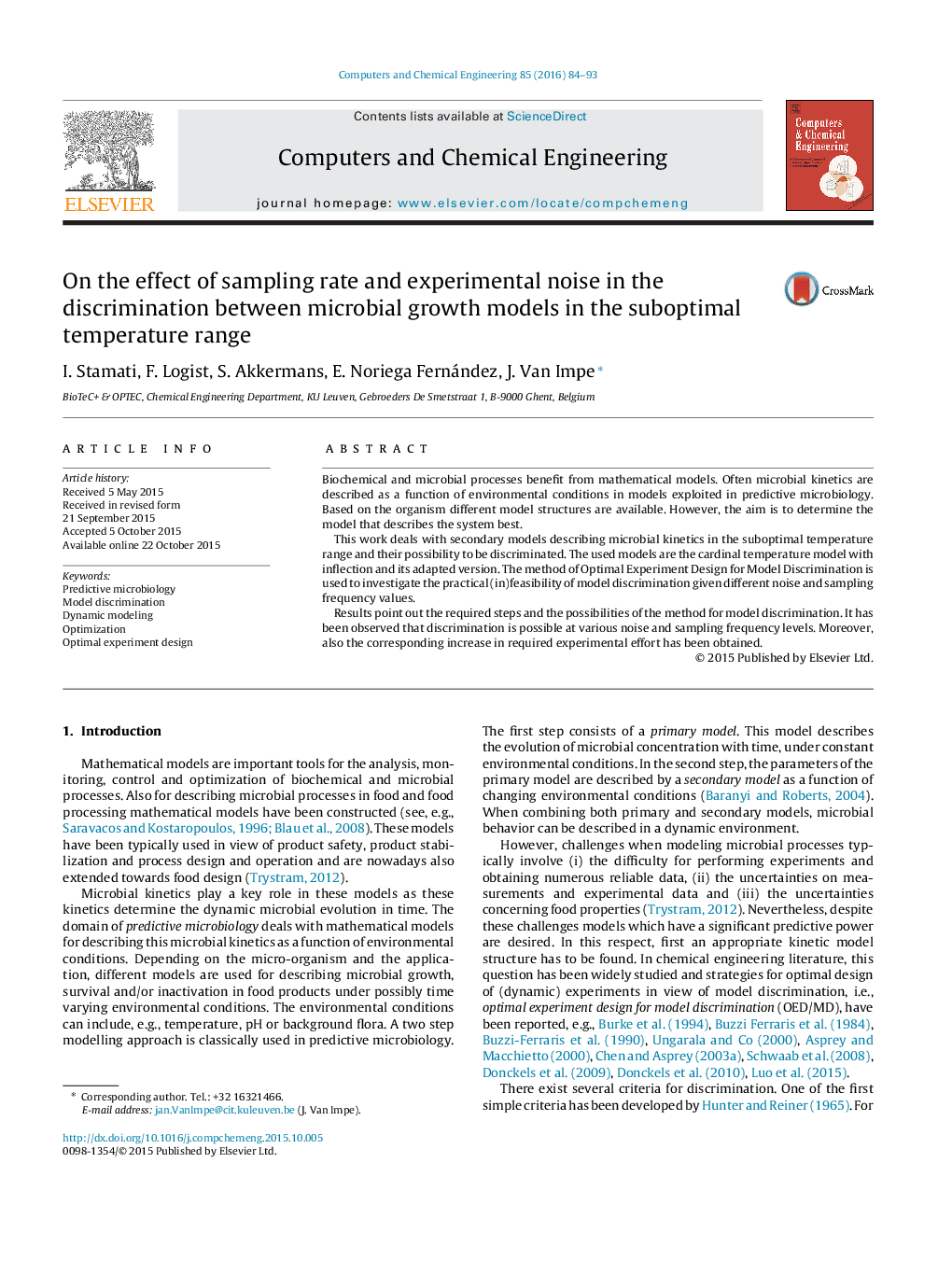| Article ID | Journal | Published Year | Pages | File Type |
|---|---|---|---|---|
| 172140 | Computers & Chemical Engineering | 2016 | 10 Pages |
•Optimal experiment design is used to discriminate between microbial kinetics.•Optimal dynamic profiles are computed based on different complexity levels.•Discrimination between two models at suboptimal temperatures is realized in silico.•The practical (in)feasibility of model discrimination has been studied.•Discrimination in various noise and sampling frequency levels is possible.
Biochemical and microbial processes benefit from mathematical models. Often microbial kinetics are described as a function of environmental conditions in models exploited in predictive microbiology. Based on the organism different model structures are available. However, the aim is to determine the model that describes the system best.This work deals with secondary models describing microbial kinetics in the suboptimal temperature range and their possibility to be discriminated. The used models are the cardinal temperature model with inflection and its adapted version. The method of Optimal Experiment Design for Model Discrimination is used to investigate the practical (in)feasibility of model discrimination given different noise and sampling frequency values.Results point out the required steps and the possibilities of the method for model discrimination. It has been observed that discrimination is possible at various noise and sampling frequency levels. Moreover, also the corresponding increase in required experimental effort has been obtained.
